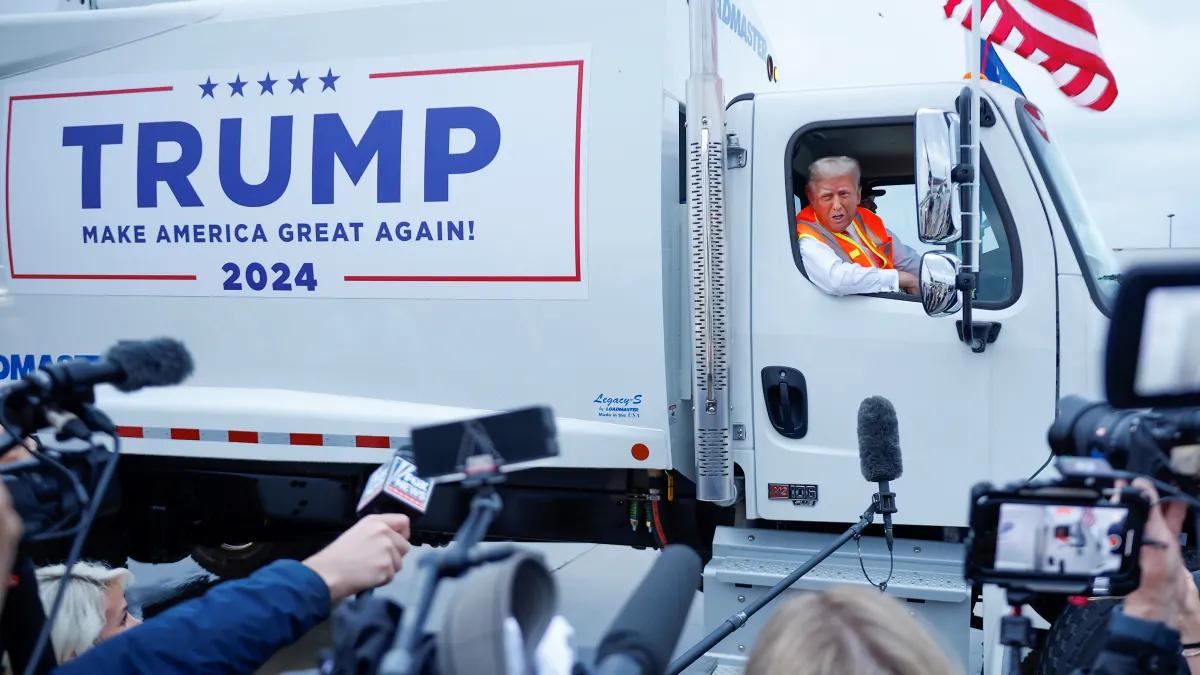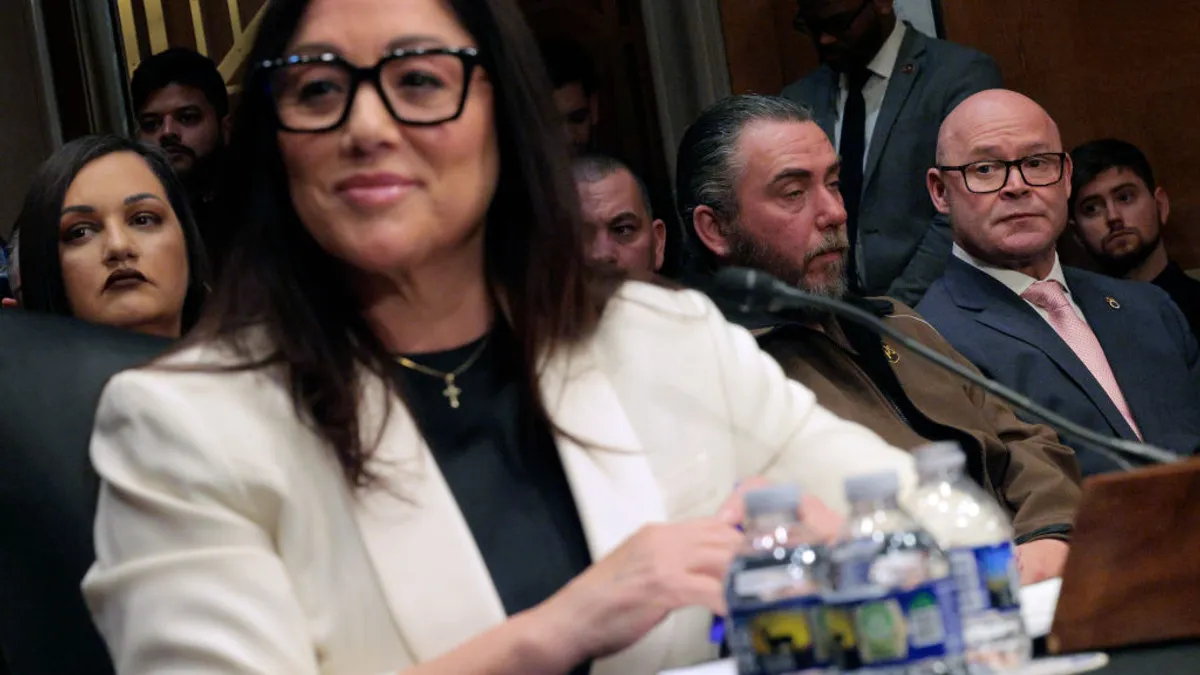Employee engagement is a powerful tool for improving company safety, but it can be tough to solicit honest feedback from employees if they don’t believe changes will be made, safety managers said.
Company culture has a huge influence on safety metrics, according to safety managers from major waste companies who spoke during an employee engagement panel at WasteExpo on Wednesday. When leaders foster supportive environments, workers are empowered to suggest changes and point out safety hazards — factors that can help the waste industry continue its work on lowering its overall fatality and injury rates, they said.
During the panel, safety managers highlighted both their successful employee engagement programs as well as efforts that have fallen flat. Here are some key takeaways from the conversation:
Increase engagement by following through on commitments
Long-term employee engagement can meaningfully drive up retention while reducing safety incident rates, but it requires company leadership to do more than send out periodic surveys.
Shawn Mandel, vice president of safety at Waste Connections, said the company operates in the spirit of “servant leadership,” meaning leaders are accountable to their employees and not the other way around. The goal is for workers to feel empowered to make critical decisions on their own — and that buy-in translates to happier workers who stay with the company longer, he said.
The company also provides regular engagement surveys for employees, which have a 92% response rate. “We want to know, are we being leaders who are looking out for everyone’s best interest?” he said. The results of those surveys factor into leaders’ compensation.
When companies can’t get their employees to fill out engagement surveys or attend feedback meetings, it’s likely because employees don’t feel that their voices are being heard. “If that survey looks the same year after year [and there are no changes in the company], no one is going to fill it out again,” said Ryan Brandos, a senior account manager at Lytx.
Jim Olson, vice president of safety at Republic Services, said his company learned that lesson firsthand. Several years ago, one of Republic’s locations hosted a meeting for drivers to ask them about “convenience things” they’d like fixed, such as torn seats or broken knobs on their trucks. It had few attendees. “Drivers didn’t participate because they didn’t think we would fix anything …Why go through the trouble?”
Effectively training the next generation of leaders will help build a more trusting environment for the future, speakers said. When an employee is promoted and transitions to managing those who were once their peers, it can create tension if that person doesn’t have the right training or support. Speakers recommend leadership-focused training, as well as training on smaller aspects such as how to run effective meetings.
“Empowered leaders are the ones who can engage employees. Then they make commitments and live up to them,” said Kelley Robinson, senior vice president of human resources for Casella Waste Systems.
It’s all about the little things
Leaders building trust with their employees must put in time and effort, but Olson said grand gestures aren’t as important as committing to smaller, more consistent engagement.
Speakers emphasized it’s important not to wait for an engagement survey to ask employees for feedback.
“Having more frequent conversations [with employees] about what could make their job easier opens up communication” for the long term, Olson said. Often it’s as simple as fulfilling a request for better-fitting gloves or allowing workers to pick their own style of safety glasses instead of mandating a certain pair.
“When they’re involved, they’re more likely to wear them,” Mandel added.
Fostering trusting one-on-one relationships also means making sure those conversations benefit both leadership and front-line workers, added Chris Jobson, senior director of safety for GFL Environmental. Workers can always tell when a manager just wants to check a box instead of getting to the root of a problem, so be mindful of how you approach each interaction, he said.
“Maybe they want you to go on a route with them because there’s a problem they want to show you, a container they want you to see. I love ride-alongs, but it slows the drivers down. So you have to ask what’s a good day for them and schedule it that way.”
Make team-building thoughtful and creative
Speakers also highlighted the value of the mantra of “communicate group goals, but reward individual behavior.” Don’t just recognize individual employees for a job well-done behind closed doors in a manager’s office, they said. Instead, do it in a public setting that also sets them up as a positive example for their peers.
Rewards and incentives are even more important especially now that millennials and Gen Z dominate the workplace, said moderator Brian Galonek, president of All Star Incentive Marketing. These generations are sometimes unfairly regarded as “the participation trophy generation” who expect praise or recognition more routinely. “But they are also smart, and they don’t want to work somewhere that doesn’t recognize their merits,” he said.
There’s also power in setting up team incentives — anything from fitness tracker goals to safety-based metrics -– because they can create a more cohesive workforce that watches out for each other long after the group challenge is over, speakers said.
Strengthening teams is especially important in the summer, Olson said. “There's a lot of PTO in summer, so they’re covering each other’s routes, driving each others trucks,” he said.
Team activities can also help managers understand which individual employees could benefit from extra safety training or guidance, speakers said. One of the hauling companies Waste Connections owns holds a “draft day,” where it decides on captains who draft the members of their teams. “You can bet by the end of the draft, those few folks who are the last to be selected, additional focused attention is given to them,” Mandel said.
Make mental health part of safety
Many employees are also dealing with heightened mental health challenges since the COVID-19 pandemic, and companies need to recognize and respond to that reality, Robinson said. “There’s workload [considerations] and stresses in all of our lives,” he said.
One way waste companies can help is by better tracking how many hours employees are working and staffing effectively, speakers said. Waste Connections closely monitors hours worked, not just to meet Federal Motor Carrier Safety Administration rules, “but also for quality of life,” Mandel said. “I don’t want a leader working a 14-hour day because it’s not good for them or their health.”
Republic has integrated mental health aspects into its regular safety training programs, Olson added, particularly in May for Mental Health Awareness Month. Having an “adverse mental state” can contribute to many kinds of unsafe scenarios, including distracted driving incidents and backing crashes, he said.
Getting workers to open up about their mental health is a tall order if companies haven’t built trust and led by example, Jobson said. Employees often appreciate when managers “share a bit of your own struggles … and be your whole self,” he said, especially when they also model healthy behaviors for managing those struggles.
Disclosure: WasteExpo is run by Informa, the owner of Waste Dive’s publisher, Industry Dive. Informa has no influence over Waste Dive’s coverage.























